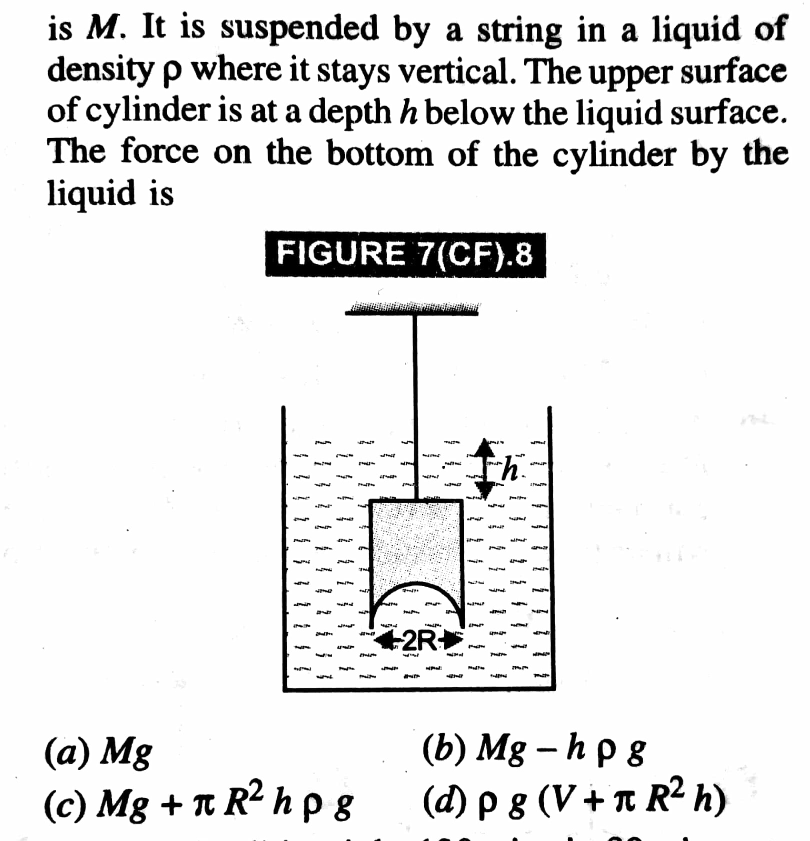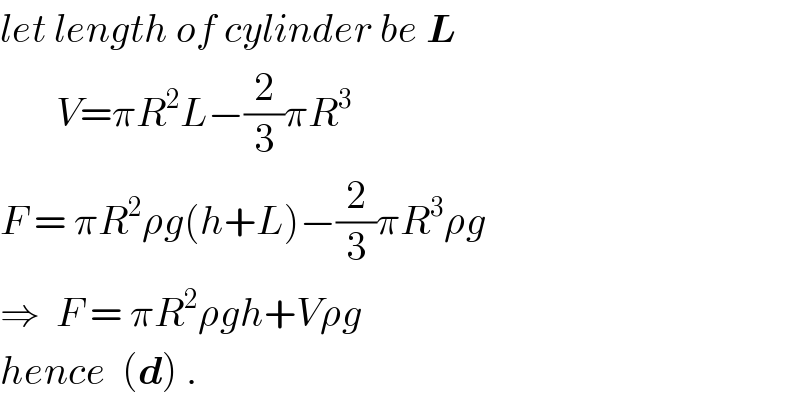Question Number 34411 by Tinkutara last updated on 05/May/18

Commented by Tinkutara last updated on 05/May/18

Commented by ajfour last updated on 06/May/18

$${let}\:{length}\:{of}\:{cylinder}\:{be}\:\boldsymbol{{L}}\: \\ $$$$\:\:\:\:\:\:\:{V}=\pi{R}^{\mathrm{2}} {L}−\frac{\mathrm{2}}{\mathrm{3}}\pi{R}^{\mathrm{3}} \\ $$$${F}\:=\:\pi{R}^{\mathrm{2}} \rho{g}\left({h}+{L}\right)−\frac{\mathrm{2}}{\mathrm{3}}\pi{R}^{\mathrm{3}} \rho{g} \\ $$$$\Rightarrow\:\:{F}\:=\:\pi{R}^{\mathrm{2}} \rho{gh}+{V}\rho{g} \\ $$$${hence}\:\:\left(\boldsymbol{{d}}\right)\:. \\ $$
Commented by Tinkutara last updated on 06/May/18

$${But}\:{V}\:{is}\:{given}\:{volume}\:{of}\:{remaining} \\ $$$${portion}. \\ $$
Commented by ajfour last updated on 07/May/18

$${yes},\:{see}\:{line}\:\mathrm{2}. \\ $$
Commented by Tinkutara last updated on 11/May/18
Thank you very much Sir! I got the answer. ��������
